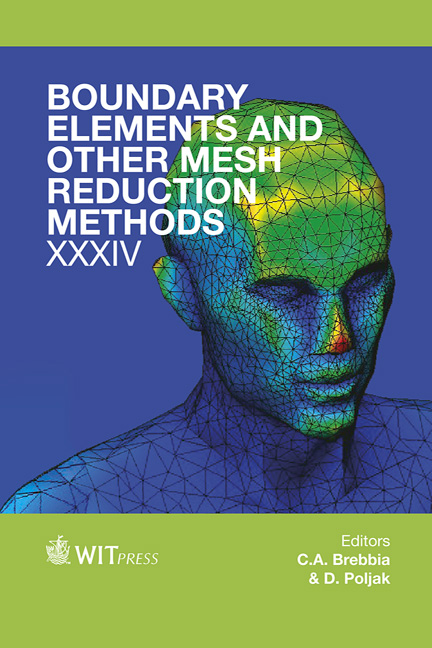Free And Forced Vibrations Of Shell Structures Interacting With Liquid
Price
Free (open access)
Transaction
Volume
53
Pages
13
Page Range
83 - 95
Published
2012
Size
544 kb
Paper DOI
10.2495/BE120081
Copyright
WIT Press
Author(s)
V. Gnitko, V. Naumenko, U. Ogorodnik & E. Strelnikova
Abstract
The method for dynamic analysis of shell structures partially filled with liquid is presented in this paper. The method relies on determining the fluid pressure from the system of singular integral equations. The axisymmetric compound shell of revolution is chosen as the model of capacity for liquid storage. The shell is considered to be a thin one, and Kirghoff–Lave linear theory hypotheses are applied. The liquid is ideal and incompressible. The coupled problem is solved using a combination of reduced BEM and FEM. Differential equations of the transient problem are solved numerically by the Runge-Kutta method of 4th and 5th order. Numerical simulation of free and forced vibrations of the elastic and rigid shells filled with the incompressible fluid under different loadings has been carried out. Keywords: fluid-structure interaction, free and forced vibrations, boundary and finite element methods. 1 Introduction Different engineering areas such as aerospace and chemical industry, power machine building, wind power engineering and transport extensively use thinwall structural elements operated under excess process loads. Usually they are also filled with oil, flammable or toxic liquids. Such facilities are fuel tanks, liquid storage tanks, oil and propellant storage containers. Destruction of these tanks by seismic action or shockwaves from a nearby explosion can lead to environmental catastrophe. Complex experimental investigation of loading processes is difficult and sometimes impossible for various reasons. Hence mathematical modeling of physical processes with the help of advanced
Keywords
fluid-structure interaction, free and forced vibrations, boundary and finite element methods.





